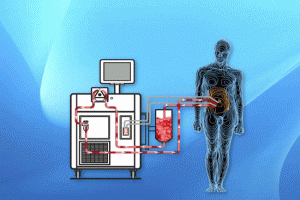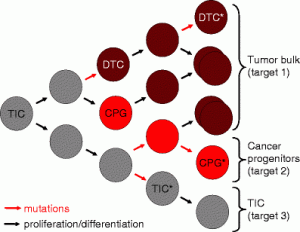Increasing numbers of obesity in both men and women nationwide are resulting in a growing rate of multiple health consequences. Recent research suggests that overweight women are at an increased risk of developing endometrial cancer, especially if menopause occurs in women younger than age 45.
One study has found that women with a body mass index (BMI) of greater than 35, who experienced their last menstrual period at an age younger than 45, had more than 20 times the risk of developing endometrial cancer than normal-weight women.
BMI is a measure of body fat based on height and weight that applies to both adult men and women. A BMI of 18.5 to 24.9 is considered normal weight, 25 to 29.9 is considered overweight and a number over 30 is considered obese.
Mary Dolan, MD, MPH, assistant professor of gynecology and obstetrics, Emory School of Medicine, notes that experts already know that obesity is linked to cardiovascular disease, high blood pressure, diabetes, joint complications and other diseases. Now the connection between obesity and endometrial cancer is on experts’ radar.

Mary Dolan, MD, MPH
Endometrial cancer forms in the tissue lining the uterus or endometrium – the lining that is “shed†monthly during menstruation. Endometrial cancer is more common in older women and fortunately is usually diagnosed early since it causes abnormal bleeding, says Dolan.
In a report published recently, Dolan and colleagues from the Centers for Disease Control and Prevention (CDC) discuss findings from a review of data from the Cancer and Steroid Hormone study from the 1980s. This study examined the relationship between oral contraceptive use and breast, ovarian and endometrial cancers in women ages 20-54 years.
Since many of the study patients with endometrial cancer were overweight, the study gave researchers an opportunity to look at the risk for endometrial cancer among younger, overweight women using BMI.
The study found that women who were younger than 45 when they had their last period and had a BMI over 35 had a 21.7 times greater risk of developing endometrial cancer than a woman of normal weight.
In comparison, older women with a BMI of 35 or higher, who had their last period at age 45 or older, had a 3.7 times greater risk of developing endometrial cancer than a woman of normal weight.
Elevated risks were also seen for women who had been overweight or obese at age 18 and who had their last period before age 45.
Dolan says obesity can lead to higher levels of estrogen because of chronic “anovulation,†where a woman fails to ovulate. Because the condition brings on irregular or no menstruation, estrogen levels remain high while opposing progesterone levels remain low. Experts believe this combination leads to an increased risk of endometrial cancer.
Dolan says physicians need to counsel patients even more to maintain a healthy weight. By both losing weight and then maintaining it, a woman’s risk for endometrial cancer likely decreases.
This study is one of only a few which have focused on younger women and the relationship between obesity and endometrial cancer. The results were published in the July 2009 issue of Obstetrics & Gynecology











